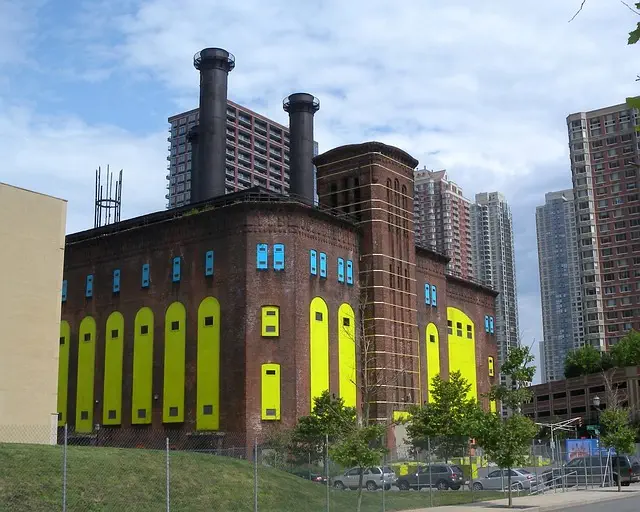Embark on a journey to one of New Jersey’s most iconic structures, the Cape May Lighthouse. Standing as a testament to maritime navigation, this architectural marvel has guided ships safely to shore since its completion in 1859. Visitors can ascend its spiral staircase for panoramic views that stretch across the Delaware Bay and beyond. The lighthouse’s preservation reflects a commitment to maintaining New Jersey’s historical integrity, with ongoing restoration efforts ensuring it remains a beacon for generations to come. Bird watchers and nature enthusiasts flock to its base, making it a focal point for those appreciating the region’s natural beauty. Throughout the year, the lighthouse hosts events and educational programs that celebrate New Jersey’s rich maritime heritage, inviting all to learn about its significance and partake in festivities that honor this grand landmark.
- Unveiling the Iconic Cape May Lighthouse: A Beacon of History in New Jersey
- The Architectural Genius Behind Cape May's Maritime Navigation Aid
- Climbing to the Top: The Exhilarating Experience of Ascending Cape May Lighthouse
- Preserving Legacy: Restoration Efforts and Ongoing Maintenance of New Jersey's Historical Landmark
- Cape May Lighthouse: A Natural Focal Point for Bird Watchers and Nature Enthusiasts
- Celebrating Maritime Heritage: Events and Educational Programs at the Cape May Lighthouse
Unveiling the Iconic Cape May Lighthouse: A Beacon of History in New Jersey

The Cape May Lighthouse, standing tall on the southernmost point of New Jersey, is an iconic beacon that has been guiding mariners to safe harbors since its completion in 1859. This historic structure, with its striking red and white striped exterior, stands as a testament to the engineering prowess of the 19th century. Towering at 157 feet, it offers panoramic views of the Delaware Bay and the Atlantic Ocean, rewarding those who ascend its 217 steps with vistas that stretch as far as Cape Henlopen in Delaware on a clear day. The lighthouse is not just a historic landmark but also an integral part of New Jersey’s maritime heritage, having been meticulously preserved and maintained to ensure it continues to serve as a navigational aid and a cultural touchstone for visitors from around the globe. Its location within the Cape May National Wildlife Refuge provides a serene natural setting that complements the lighthouse’s historical significance, making it a must-visit destination for those interested in American history, nature, or simply breathtaking views.
The Architectural Genius Behind Cape May's Maritime Navigation Aid

The Cape May Lighthouse, standing tall on the southernmost point of New Jersey, is a quintessential example of architectural prowess that has guided maritime navigation for over a century and a half. Erected in 1859, this 157-foot structure was designed to be an imposing landmark visible from distant ships navigating the treacherous Atlantic coastline. Its conical shape, distinguished white and red bands, and powerful light source were all carefully planned to enhance its visibility during daylight hours and at night. The lighthouse’s architectural genius lies in its integration of advanced technology of the time, featuring a fixed first-order Fresnel lens that projected a beam of light capable of outshining distant lights and aiding sailors in finding safe passage to and from the ports along New Jersey’s coast.
The design of the Cape May Lighthouse reflects a harmonious blend of aesthetics and functionality, with its spiral staircase leading to a narrow balcony encircling the top third of the structure. This balcony and the lens within it were critical for the lighthouse’s effectiveness as a maritime navigation aid. The lighthouse’s architects, leveraging their understanding of optics and materials available during the mid-19th century, crafted a monument that has endured both the elements and the changes in maritime technology. Today, the Cape May Lighthouse continues to stand as a testament to the ingenuity of its creators and an essential component of New Jersey’s rich maritime history, offering visitors a glimpse into the past while still serving as a vital navigational aid for modern seafarers.
Climbing to the Top: The Exhilarating Experience of Ascending Cape May Lighthouse

Situated on the southernmost tip of New Jersey, the Cape May Lighthouse stands as a beacon of history and engineering, offering visitors an exhilarating experience as they ascend its 198 steps to the top. Constructed in 1879, this iconic lighthouse is not just a landmark but also a testament to the craftsmanship of the past. The climb up the spiral staircase, though a physical endeavor, rewards those who undertake it with panoramic views of the Atlantic coastline and the Delaware Bay. As you ascend, the lighthouse’s tight, winding steps and narrow landings make for an intriguing journey through time, as each step brings you closer to the panoramic vantage point. Once at the summit, the breathtaking views of the Cape May area are a reward that extends beyond the visual; it’s an immersive experience that connects climbers with New Jersey’s rich maritime history and the natural beauty of its coastal landscape. Whether you’re a local or a visitor, the climb to the top of the Cape May Lighthouse is an adventure that offers both a physical challenge and a cultural enrichment, encapsulating the essence of New Jersey’s heritage and offering a unique perspective on its stunning surroundings.
Preserving Legacy: Restoration Efforts and Ongoing Maintenance of New Jersey's Historical Landmark

The Cape May Lighthouse, a beacon of maritime navigation and a historical icon, stands as a testament to New Jersey’s rich heritage. This 1859 landmark, with its striking red and white striped exterior, has witnessed the ebb and flow of time, serving as a guiding light for ships navigating the treacherous waters off the state’s coast. As one of the most well-preserved lighthouses in the country, it is not just a relic of the past but also an educational resource and a vital part of Cape May’s identity. Preserving this legacy requires meticulous restoration efforts and ongoing maintenance to ensure its structural integrity and historical significance remain intact for future generations. The New Jersey Department of Environmental Protection, along with dedicated volunteers and historians, work tirelessly to uphold the lighthouse’s architectural charm and operational functionality. Through a combination of preservation techniques, including the use of materials that match the original specifications, and modern conservation methods, the lighthouse continues to be a symbol of New Jersey’s commitment to maintaining its historical landmarks for the enjoyment and education of all who visit. The efforts extend beyond physical upkeep; they also involve interpreting the lighthouse’s history through educational programs and interactive exhibits that enrich the visitor experience and deepen appreciation for this New Jersey treasure.
Cape May Lighthouse: A Natural Focal Point for Bird Watchers and Nature Enthusiasts

Nestled at the southernmost point of New Jersey, the Cape May Lighthouse stands as a grand sentinel overlooking the confluence of the Atlantic Ocean and Delaware Bay. This iconic landmark, completed in 1859, is not just a historical beacon but also a natural focal point for bird watchers and nature enthusiasts alike. Its towering structure offers an unparalleled vantage point to observe migratory birds as they pass through the region, making it a must-visit destination for those interested in avian diversity and natural beauty. The lighthouse’s surroundings are part of the Cape May National Wildlife Refuge Complex, a critical habitat for over 500 species of birds, which has earned the area recognition as one of the best bird watching spots in the United States. The refuge’s varied ecosystems, including marshes, forests, and coastal habitats, provide a rich environment for both resident and migratory wildlife, ensuring that each visit to the Cape May Lighthouse can yield unique sightings and experiences for New Jersey’s nature aficionados.
Celebrating Maritime Heritage: Events and Educational Programs at the Cape May Lighthouse

Situated on the southernmost point of New Jersey, the Cape May Lighthouse stands as a proud beacon, celebrating over two centuries of maritime heritage. The lighthouse, with its iconic red and white stripes, is not just a historic landmark but also a vibrant center for educational programs and events that honor the rich seafaring past of the region. Visitors can partake in guided tours to learn about the lighthouse’s pivotal role in aiding navigation and saving countless ships and lives from the treacherous waters off the New Jersey coast. The Cape May Lighthouse offers an array of activities, including workshops that delve into the history of maritime signaling and the evolution of lighthouses in New Jersey.
Educational programs at the lighthouse are designed to captivate both young minds and seasoned historians. These initiatives include interactive exhibits and talks that explore the area’s nautical legacy, as well as special events like “Lighthouse Day” which features live demonstrations of early 19th-century navigation techniques. The Cape May Lighthouse serves as an invaluable resource for those interested in the maritime history of New Jersey, providing a hands-on learning experience that brings to life the stories of the intrepid seafarers who once navigated these waters. Through these programs, participants gain a deeper appreciation for the importance of lighthouses and their critical role in New Jersey’s maritime heritage.
